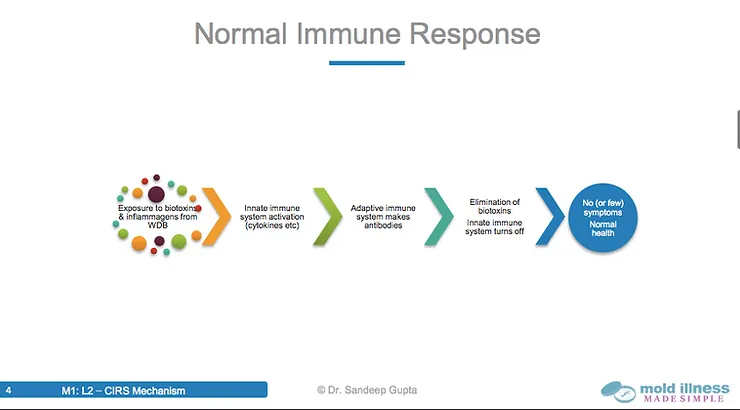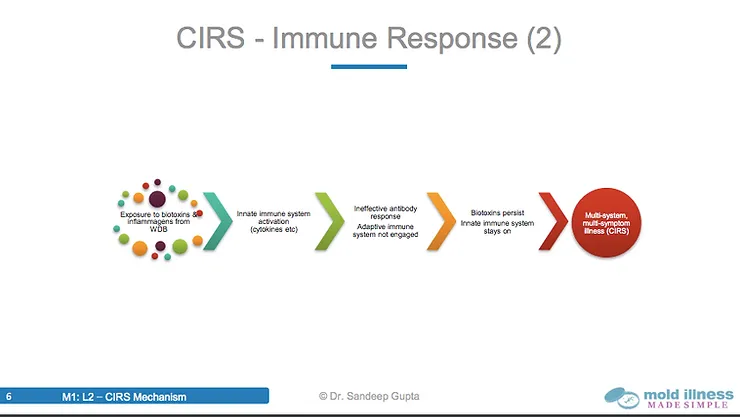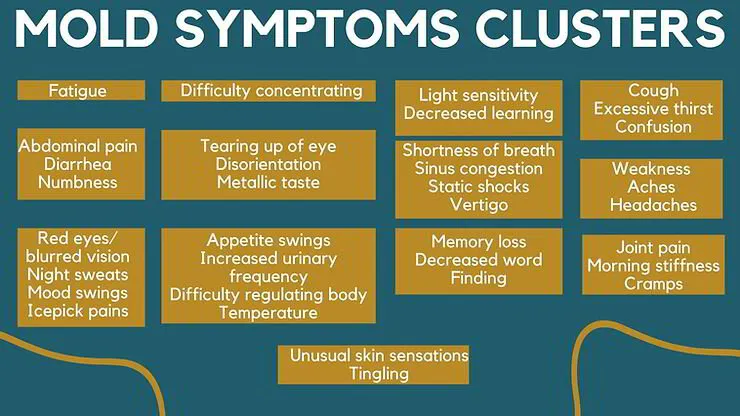Mold toxicity is an overlooked and common cause of sleep issues. You could be living in mold and not even know it because it isn't always visible. Or you could have been exposed to mold in the past and your body hasn’t been able to detoxify it properly.
It’s estimated that 75% of homes have water damage. And 25% of the population has a gene that puts them at risk for developing CIRS (Chronic Inflammatory Response Syndrome) when they’re exposed to mold. This syndrome causes many symptoms in many different systems in the body.
I have 6 clients with mold toxicity and whose sleep is getting better as we deal with it!
It’s not my favorite thing to tell my clients that they may be dealing with mold. But at least it explains what's causing their symptoms and that there is a way to get better.
Mold toxicity affects sleep because it causes inflammation and stress in the body. Different systems break down under all this stress. The brain is the target of CIRS and so many people develop insomnia and mental health issues from this toxicity.
What is CIRS?
The immune system doesn't respond properly in the 25% of people who can’t detoxify mold and so they develop CIRS.
To explain CIRS, you need to know that we have 2 types of immunity. There’s the non-specific immunity that happens when you’re initially exposed to something. Then acquired or specific immunity kicks in within a few days that attacks the toxin specifically.
This is how your immune system should work: When you're initially exposed to a toxin, your body releases cytokines that cause general inflammation (non-specific immunity). Then your body produces antibodies to specifically attack the toxin which eliminates the toxin and turns off that general immune response.
In CIRS, the toxin causes the body to produce cytokines. But no antibodies are made; the specific immune system doesn’t kick in. So the toxins persist and the general inflammatory response continues which leads to illness.
The symptoms of CIRS can overlap with other syndromes such as Chronic Fatigue Syndrome and fibromyalgia. Increased urination and static electrical shocks are more common in CIRS than these other conditions.
There are 4 steps to dealing with this:
1. Test for mold toxicity and CIRS in your body.
2. Test for mold in your environment.
3. Remove all sources of mold. All the supplements in the world won’t help you get
better if you’re still exposed to mold.
4. Detoxify your body from mold.
Test for mold in the body
To test for mold toxicity in the body, first I see if their symptoms correlate. There are 13 clusters of symptoms that are associated with CIRS and if you have 6 or more of them, you’re likely dealing with this syndrome.
Next, I have my clients do an inexpensive Visual Contrast Sensitivity test online. If they fail this test and have 7 or more symptom clusters, there’s a 98.5% chance that they have CIRS, according to this study.
With these 2 assessments, I usually conclude mold toxicity/CIRS and give them an appropriate protocol to deal with this.
I can also run 2 other tests to verify: the OAT (Organic Acids Test) and the MycoTox test. A MarCons test that looks for mold in the sinus cavities can be helpful as well. Since mold can be expensive, I don’t order these tests unless my clients want them. Instead, we can assume mold is an issue and I can recommend a protocol to deal with it.
Test for mold in your environment
The next step is to test for mold in your home, work, etc. This is critical because you won’t get better if you’re living or working in mold.
There are 3 options:
1. The least expensive way is through a company called Immunolytics that offers DIY
mold testing. You can order plates for $3 each and you test 4-5 rooms in your home.
2. You can do an ERMI self-test where you send the sample back to the lab. This
costs around $250.
3. Hiring an inspector to come to your home to do an ERMI and HERTSMI test is the
best option. Look for someone who knows about CIRS.
Deal with mold in your environment
- Clean your air.
The first thing to do is to buy a HEPA air filter to start detoxifying your air. I like Medify Air but there are many to choose from.
- Remove the mold from your home/work/school.
If you’re reacting to mold, you have to remove the mold (remediate) from your home if you want to get better. You want to hire a company that is familiar with CIRS and that doesn’t also do inspections (to avoid conflict of interest).
- Address the underlying causes of mold growth.
You want to look for moisture, condensation, humidity, HVAC system, etc.
Deal with mold in your body
- Open up drainage pathways.
This means that you want to be peeing, pooping and sweating.
- Support your liver.
- Use detox binders.
Binders like zeolite, activated charcoal, bentonite clay and more will bind to toxins such as mycotoxins and escort then out of the body so they aren’t circulating around causing inflammation and burdening your liver.
- Spend time outside as much as possible.
- Get sunshine as much as possible.
- Dust and clean with a mask on.
- Eat a low mold diet.
- Address other imbalances in your body (hormones, gluten sensitivity, inflammation, gut pathogens, etc.).
While mold can cause many symptoms and severe sickness, it’s relatively simple to deal with once you know it’s there. If you can’t sleep and you have other weird symptoms, mold could be the culprit. And I can help you with this so you feel better and can sleep normally!
Book a call with me to get started.




